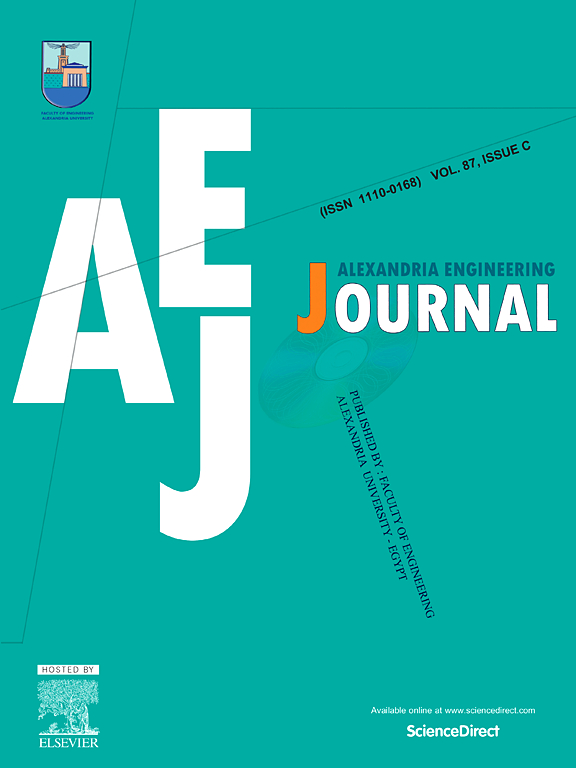利用基于金纳米颗粒-钒酸铋光催化剂的光电化学传感器检测运动员生物样本中的咖啡因:体育运动的视角
IF 6.2
2区 工程技术
Q1 ENGINEERING, MULTIDISCIPLINARY
引用次数: 0
摘要
本研究利用固定在铟锡氧化物基底上的钒酸铋(Au-BiVO4/ITO)上的金纳米粒子(Au NPs),提出了一种检测咖啡因(CA)的光传感器。通过表面分析、晶体学和电化学方法研究了 Au-BiVO4/ITO 电极的特性。在 BiVO4 结构中加入金纳米粒子显著提高了材料的光催化性能,尤其是光电流响应。这种改性使光电流从最初的 200 µA 增加到 300 µA 以上。与 BiVO4/ITO 相比,Au-BiVO4/ITO PEC 传感器在可见光下对 CA 的光电流响应更强。在优化条件下,PEC 传感器的分析信号与 CA 浓度在 0.3 至 270 μM 之间呈线性相关,检测限为 0.08 μM。该方法采用标准添加法测定了运动员血清和尿液样本中的 CA,血清和尿液样本的平均回收率分别为 99.4% 和 97.8%,准确度较高。此外,检测结果与标准 HPLC 分析结果非常吻合,表明回收效率很高。此外,该传感器在 CA 测量中表现出卓越的性能和可接受的优点,使其适用于生物样本中的可靠分析应用。本文章由计算机程序翻译,如有差异,请以英文原文为准。
Utilization of gold nanoparticles-bismuth vanadate photocatalyst-based photoelectrochemical sensor for caffeine detection in biological samples of athletes: A sporting perspective
This study presents a photo sensor for caffeine (CA) detection, employing gold nanoparticles (Au NPs) immobilized on bismuth vanadate on indium tin oxide substrate (Au-BiVO4/ITO). The characterization of the Au-BiVO4/ITO electrode was investigated by surface analysis, crystallography and electrochemical methods. The incorporation of Au NPs into the BiVO4 structure has significantly increased the photocatalytic performance of the material, especially its photocurrent response. This modification has increased the photocurrent from the initial value of 200 µA to more than 300 µA. The Au-BiVO4/ITO PEC sensor demonstrated enhanced photocurrent responses to CA under visible light, compared to BiVO4/ITO. Under optimized conditions, the PEC sensor showed a linear correlation between analytical signal and CA concentration from 0.3 to 270 μM, with obtained detection limit of 0.08 μM. Using the standard addition way, it measured CA in serum and urine samples from athletes, achieving average recovery rates of 99.4 % in serum and 97.8 % in urine, which indicates high accuracy. Moreover, the results showing strong agreement with standard HPLC analysis and demonstrating high recovery efficiency. Furthermore, the sensor demonstrated excellent performance with acceptable figure of merit for CA measurement, making it suitable for reliable analytical applications in biological samples.
求助全文
通过发布文献求助,成功后即可免费获取论文全文。
去求助
来源期刊

alexandria engineering journal
Engineering-General Engineering
CiteScore
11.20
自引率
4.40%
发文量
1015
审稿时长
43 days
期刊介绍:
Alexandria Engineering Journal is an international journal devoted to publishing high quality papers in the field of engineering and applied science. Alexandria Engineering Journal is cited in the Engineering Information Services (EIS) and the Chemical Abstracts (CA). The papers published in Alexandria Engineering Journal are grouped into five sections, according to the following classification:
• Mechanical, Production, Marine and Textile Engineering
• Electrical Engineering, Computer Science and Nuclear Engineering
• Civil and Architecture Engineering
• Chemical Engineering and Applied Sciences
• Environmental Engineering
 求助内容:
求助内容: 应助结果提醒方式:
应助结果提醒方式:


